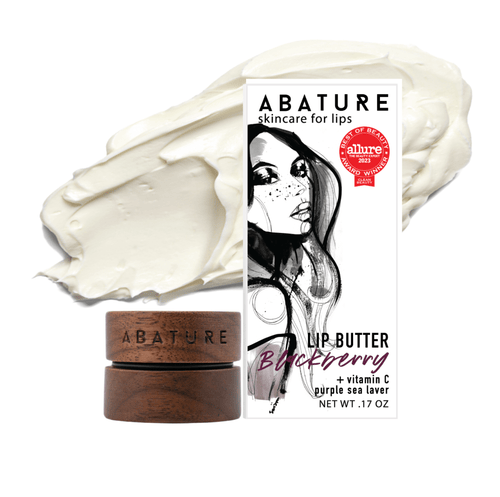Lips require more than casual care because their biology is unlike that of any other skin on the body. To support healthy function and lasting comfort, it helps to examine the unique structures that make lips both vulnerable and remarkable.
The Thin Barrier Of Lip Tissue
Unlike most skin, lip tissue is fragile, with far fewer protective layers. The stratum corneum, the barrier responsible for sealing in hydration and keeping out irritants, is almost absent here. This structural gap explains why lips dry and crack so quickly when exposed to weather, diet changes, or even habitual mouth breathing.
The Absence Of Sebaceous Glands
Most skin stays balanced thanks to sebaceous glands that release natural oils. Lips, however, are almost entirely without them. This lack of a built-in moisturizing system means they rely heavily on external hydration and protective products to avoid that familiar tight, uncomfortable sensation. Without consistent support, lips lose resilience and remain vulnerable to dehydration.
The Prominence Of Blood Vessels
Blood vessels are positioned close to the surface of the lip tissue. They create the rosy hue associated with healthy lips but also increase sensitivity. Due to this anatomy, lips are more susceptible to irritation, damage from ultraviolet exposure, and adverse reactions to harsh ingredients. Shielding them with targeted formulations is key to maintaining both appearance and integrity.
The High Rate Of Cellular Turnover
Lips are in constant motion, talking, eating, smiling, and that activity accelerates cellular turnover. The renewal process is faster here than in most facial areas, demanding ingredients that nourish, repair, and fortify against stress. Antioxidants, omega-3 fatty acids, polyhydroxystearic acid, and vitamins play a vital role in strengthening this fragile tissue, reducing premature aging, and preventing the persistent cycle of chapping and flaking.
When you understand these biological realities, it becomes clear why generic solutions often fail to meet expectations. Effective lip care requires products designed with this unique structure in mind, offering both immediate relief and long-term protection.
Key Nutrients For Plump, Healthy Lips
The skin on your lips is a specialized structure, thinner and more delicate than any other area of your face. With fewer protective layers and no natural oil glands, it depends entirely on targeted nourishment to stay healthy. When the proper nutrients are present, lips maintain hydration, volume, and resilience even in the face of daily environmental stress.
The Protective Role Of Antioxidants
Antioxidants act as the first line of defense, shielding lip tissue from oxidative stress caused by UV radiation, pollution, and lifestyle factors. Vitamins C and E are particularly effective, neutralizing free radicals that degrade collagen and elastin. These proteins are essential for maintaining firmness and volume. Without consistent antioxidant protection, lips are more susceptible to fine lines, loss of elasticity, and visible signs of premature aging. For deeper support, a vitamin C serum for lips enhances antioxidant activity, boosting repair and promoting a smoother, more resilient texture.
The Moisture Lock Of Omegas
Essential fatty acids, such as omega-3 and omega-6, restore balance where lips naturally fall short. Because lips lack sebaceous glands, they cannot produce the oils that typically maintain moisture in skin. Omega replenishes the lipid barrier, helping to trap water molecules and creating a smooth, supple surface. Consistent omega support transforms rough texture into a hydrated foundation that can withstand fluctuations in weather or diet.
The Restorative Power Of Vitamin B5
Also known as pantothenic acid, Vitamin B5 functions as both a humectant and a repair agent. It draws water into lip tissue, creating a naturally plumped appearance while simultaneously accelerating recovery from chapping or irritation. Unlike superficial fillers, B5 supports deeper cellular activity, ensuring that hydration lasts beyond application and contributes to overall lip resilience over time.
The Collagen Boost Of Peptides
Peptides are short chains of amino acids that act as messengers, signaling cells to produce more collagen. This is critical because lip volume diminishes gradually with age, resulting in thinning and a loss of definition. By stimulating collagen synthesis, peptides help preserve structure and maintain that youthful bounce. They also strengthen the lip matrix, making the skin more resistant to daily wear and environmental exposure.
Ready to rethink lip care? At Abature, our lip balms blend clean, plant-based ingredients with proven science to keep lips smooth, hydrated, and resilient through every season. Crafted for those who expect more from their daily essentials, our balms protect and nourish without compromise. Try the difference and give your lips the care they deserve.
Seasonal Lip Care Routines: Summer Vs Winter
Lips, being one of the most delicate areas of skin on your body, take a beating from environmental extremes. Summer’s blazing sun and winter’s icy bite demand entirely different strategies, and both require routines built around protection, nourishment, and repair.
Summer Lip Care Strategies
In summer, the enemy is UV exposure paired with dehydration. The sun can wreak havoc on your lips, breaking down collagen and accelerating aging if left unprotected. A balm with broad-spectrum defense is essential, supported by omegas and antioxidants to lock in hydration. Gentle exfoliation with fruit-based enzymes once a week helps maintain smoothness, and our mint lip scrub offers a refreshing option that clears buildup without irritation. Reapplying every two hours ensures resilience in high heat and humidity.
Winter Lip Care Strategies
Winter brings the combined assault of cold air outside and dry heat indoors, leaving lips cracked and vulnerable. This season calls for heavy-duty nourishment with plant-based lipids and vitamins to rebuild the protective barrier. Collagen-boosting actives counter thinning, while a rich serum or butter applied overnight aids repair. Exfoliation should be performed less frequently, about once every ten days, to prevent stress on already fragile skin.
Why Seasonal Care Matters
The science of seasonal care involves understanding how the environment interacts with the body's biology. Tailoring routines with intention keeps lips healthy, plump, and resilient year-round, no matter what Mother Nature brings.
Pairing Lip Serum With Balm For 24-Hour Hydration
Lips lack natural oil glands and protective barriers, making them highly vulnerable to dehydration and environmental stress. A single product rarely delivers complete care. By combining a serum with a balm, you create a system that penetrates, repairs, and protects, ensuring round-the-clock hydration that matches the biology of lip tissue.
The Penetrating Power Of Lip Serum
A well-formulated serum delivers concentrated actives, including antioxidants, omega fatty acids, and vitamins. Applied to clean, slightly damp lips, it penetrates deeply, supporting collagen, restoring hydration, and countering daily stressors such as cold air, wind, and subtle moisture loss. Used morning and night, it builds a foundation of resilience at a cellular level.
The Protective Seal Of Lip Balm
Layering balm directly after serum locks in hydration and enhances results. Plant-based butters and fruit extracts create a breathable shield that prevents moisture loss while providing nourishment. Beyond comfort, the balm acts as armor, guarding against pollutants and weather extremes. Regular reapplication after eating or exposure keeps the protective layer intact throughout the day.
Why The Duo Delivers Results
Serum repairs from within, while balm preserves and shields from the outside. Together, they create a 24-hour cycle of care rooted in cosmetic science and aligned with sustainable beauty. This combination transforms lip care from a temporary fix into a consistent system for long-term hydration, strength, and definition.
Lip Balm Form Factors: Stick, Tube, Butter, Or Serum
The form factor of lip balm can make or break your experience, depending on your needs, lifestyle, and the specific biology of your lips. We’re talking about sticks, tubes, butters, and serums, each with its own strengths and trade-offs, crafted through the lens of cosmetic chemistry and sustainability.
Here’s the unfiltered breakdown:
- Stick: The classic. Portable, mess-free, and built for on-the-go application. Sticks are often formulated with waxes and oils to create a protective barrier, making them ideal for quick touch-ups in harsh weather conditions. But let’s not romanticize them; they can lack the depth of hydration needed for severely chapped lips, and their slim design sometimes means less product longevity. Plus, the environmental cost of plastic packaging in most mainstream options is a bitter pill to swallow.
- Tube: They offer a softer, balm-like texture that’s often squeezed out for a more controlled application. Tubes can pack more nourishing ingredients, such as plant-based butters or antioxidants, making them a go-to option for moderate dryness. The downside? Many come in single-use plastics, clashing with eco-conscious values, and the application can feel less precise if you’re not using a finger or a tool.
- Butter: Now we’re getting into heavy-duty territory. Lip butters are thick, rich, and often loaded with omegas and vitamins to repair and deeply moisturize. They’re the tank class of lip care, perfect for overnight treatments or brutal winter conditions. But they’re not without flaws; their dense texture can feel heavy, and they’re usually housed in jars or tins, requiring a clean finger for application, which isn’t always convenient.
- Serum: Lip serums are lightweight, fast-absorbing, and often formulated with high-performance actives, such as collagen-boosting peptides or hydrating acids. They’re less about surface protection and more about penetrating deeper to support lip tissue health. They’re not always a standalone solution; pairing with a balm for sealing in moisture is often necessary. Sustainable packaging for liquid formulas can pose a logistical challenge in an industry that is still adapting to eco-friendly standards.
Each form factor tells a different story about how we approach lip care, striking a balance between efficacy and practicality. The science behind these products is meticulous, prioritizing clean ingredients over cheap fillers, while the push for sustainable design challenges outdated norms.
Read also:







